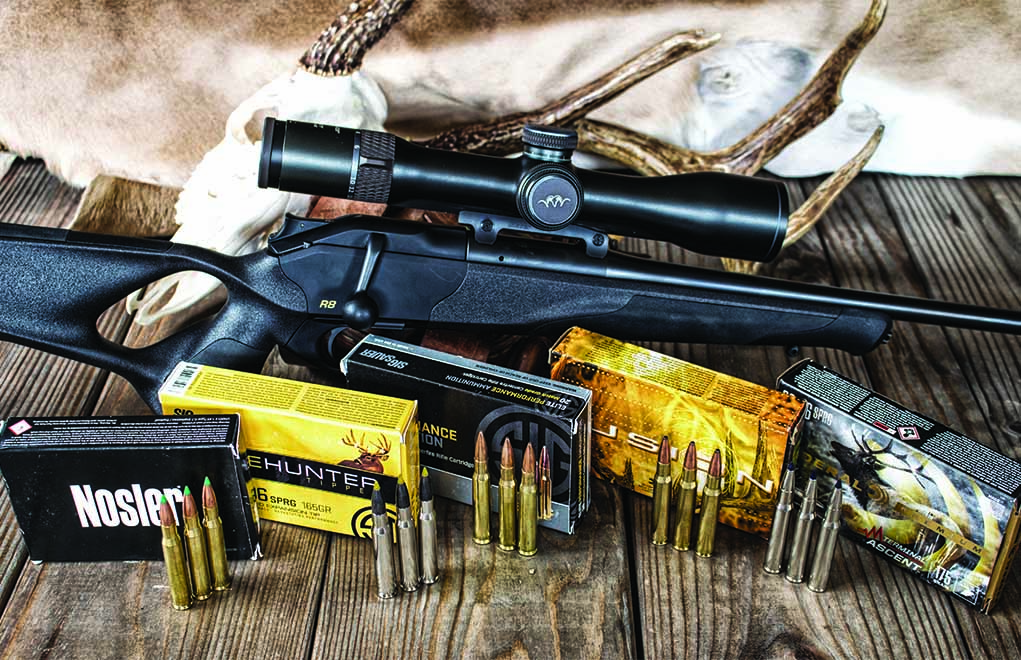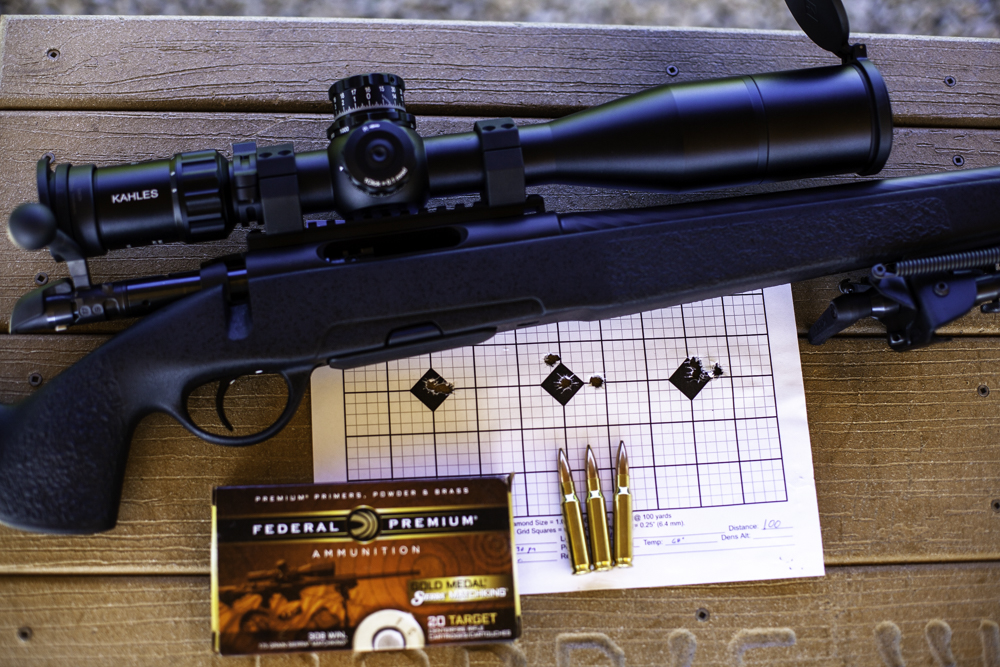
Nearly ballistic twins, the .308 versus .30-06 debate seems moot. However, some nuances can swing hunters and shooters one way or another.
How Does The .308 Vs .30-06 Debate Shake Out:
- Given its larger case capacity, the .30-06 can be pushed to moderately higher velocities.
- This velocity gives is a slight edge at longer ranges.
- Additionally, the larger case allows the .30-06 to load larger bullets.
- Since it started life at a NATO cartridge, there is a greater variety of semi-auto rifle chambered .308.
- There is some historic match proof the .308 is a more accurate cartridge.
- Though, some modern studies debate this and see the .30-06 performing better at longer ranges and the .308 better at medium range.
Despite the recent success of the upstate 6.5 Creedmoor and other metric marvels, one caliber still firmly captures the American shooter’s heart. There’s just no replacing the good ol’ .30-caliber in all it’s wondrous forms. While you may have graduated to a different chambering or fallen in love with some other diameter, it’s pretty certain if you’re a Yankee your formative years were spent pitching some version of the medium bore. It’s been that way in America at least since the .30-30 Winchester hit the scene and show little sign of abating.
Though, when talking the almighty “thirty” two cartridges generally rise to the top—the venerable .308 Winchester and the iconic .30-06 Springfield. By far the most popular options, they ubiquitous and perhaps only lag behind the .22 LR and 5.56 NATO/.223 Remington in the most shot cartridges. But there a strange twist to the .30-caliber Winchester and Springfield. They’re veritable twins. Almost.
While the cartridges are similar in many ways, the .308 vs .30-06 debate isn’t entirely moot. When it comes to some niche considerations, some nuances might endear them to different shooters. Then again, the shades might not account for anything to other marksmen. It all just depends on what you’re talking about with these old warhorses.
Brief History
Before jumping into the specifics of the .308 vs .30-06, it might be wise to touch on both cartridges’ background. Like so many things enduring in the world of firearms, the genesis of the .30-calibers begin with military service.
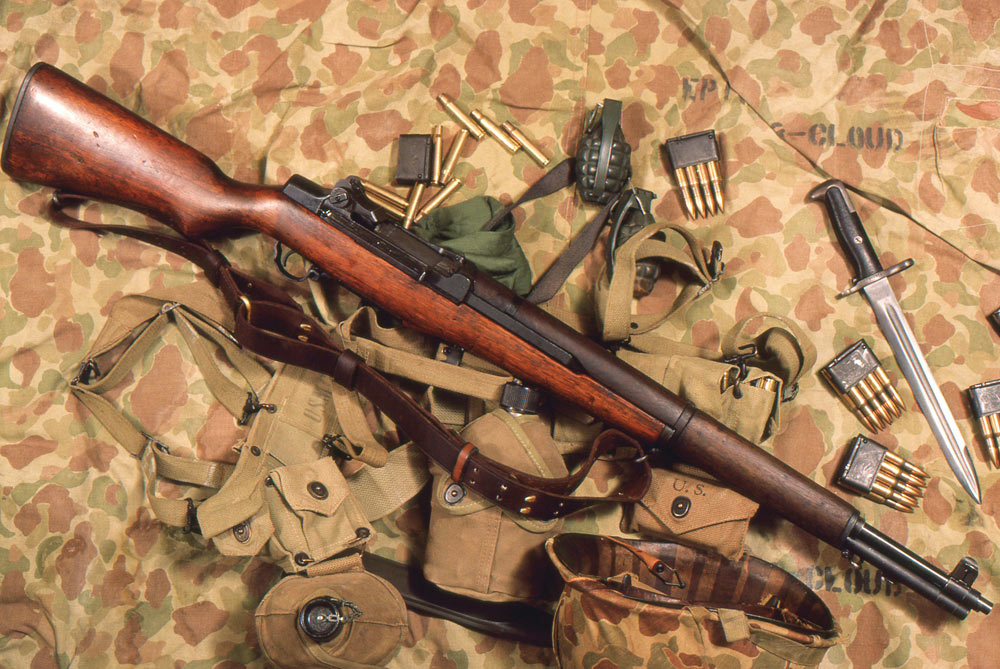
The older of the two, the .30-06 was adopted in 1906 (hence the aught six), replacing the .30-03 (it parent case), 6mm Lee Navy, and .30-40 Krag. Aiding the cartridge’s rise was the first rifle chambered for it, the legendary Springfield M1903. Serving admirably World War I as the U.S. expeditionary force’s main service rifle, the Mauser-style bolt-action continued as a staple for American snipers in World War II. But in this conflict the .30-06 truly made a name for itself, coupled with perhaps the most legendary service rifle of all time—the M1 Garand.
Successful as the .30-06 Springfield and Garand were up through the Korean War, the powers that be believe both had run their course by mid-1950s. Concerns over capacity, manufacturing costs and logistics fueled not only a candidate to replace the M1, but also its long-action cartridge. Though, given their heroic pasts, both exerted immense gravity, evident in what replaced them.
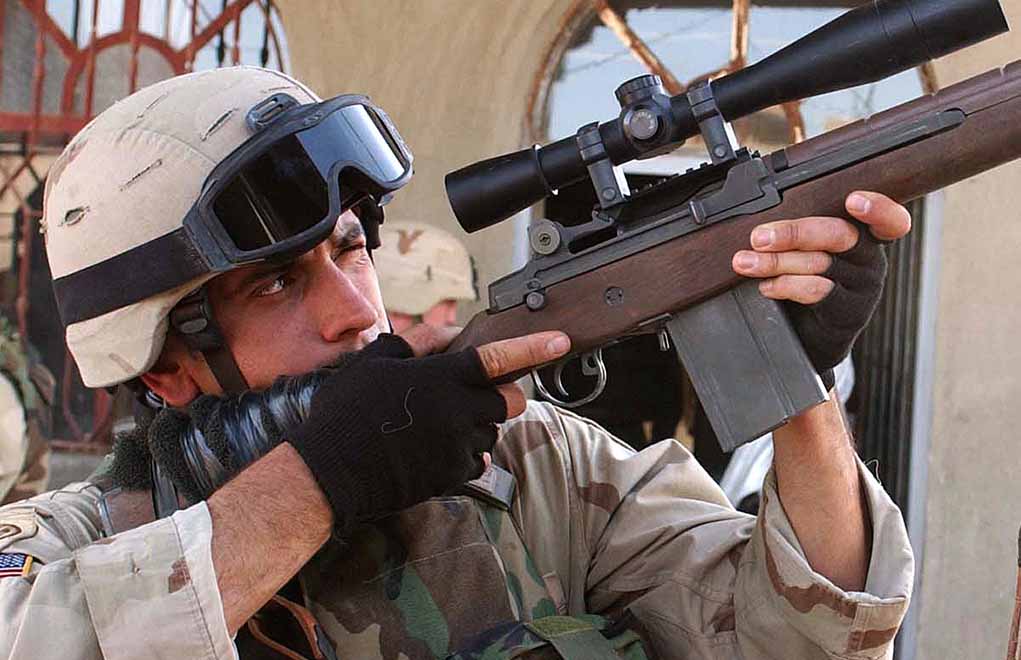
The M14 is essentially an updated Garand, its most notable upgrades being select-fire and removable box magazine. And the 7.62x51mm NATO (commercially known as the .308 Winchester) performance-wise was pretty much the .30-06, shrunken down in a squat cartridge. While the rifle and cartridge proved as potent as their forbearers, particularly when used in a similar fashion—in semi-automatic—their days were number soon after adoption. Among the shortest runs of a service rifle, by the mid-1960 the M14 and 7.62 were replaced by the M16 and the now pervasive 5.56x45mm NATO cartridge.
.308 Vs .30-06 Case Size
As mentioned above, the defining feature between the .30-caliber cartridges is case size. The military fretted over the length of the Springfield, mainly for cost and logistical reasons. By their premise, the shorter the cartridge the smaller the action, thus a rifle could be created using less material, saving money and weight. It didn’t quite pan out that way—at least with the M14—but that was the theory. Additionally, there were arguments the military could fit more rounds of .308 in ammo boxes, thus get more ammo to soldiers en mass.
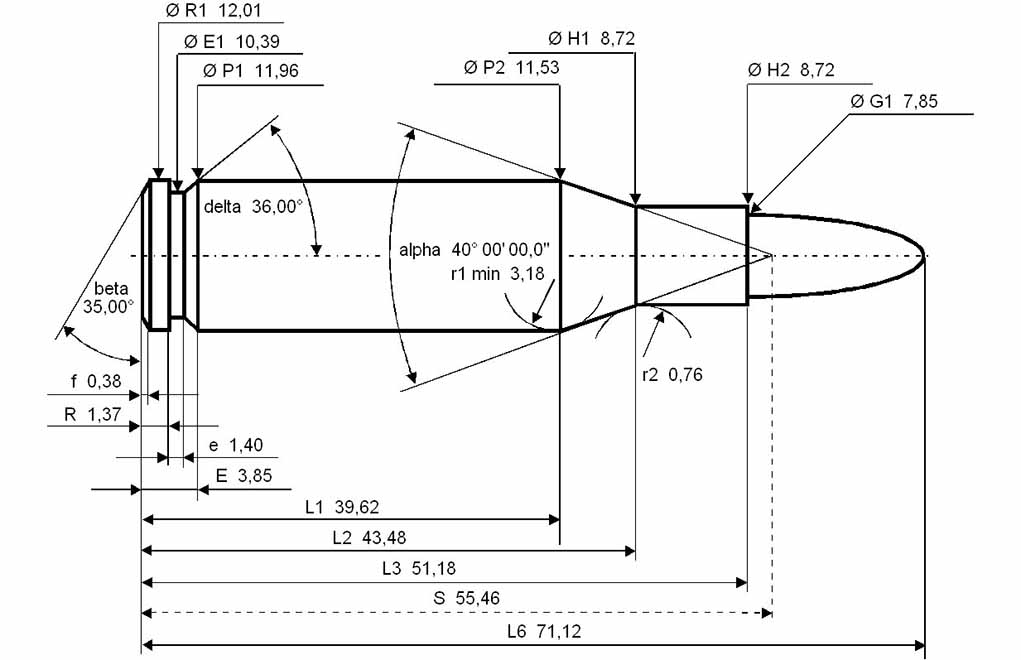
Indeed, the .30-06 is a longer case, measuring 2.48 inches to the .308’s 2.015 inches. While this has some effect on the rifles chambered for them (we’ll get to that), it also plays a role in capacity. The Springfield has an edge here, holding around 68 grains of water, compared to the .308’s 56. In all honesty, it’s not a huge dividing line, in most cases equating to a modest gain in velocity, but there are outliers.

Velocity And Trajectory Of The .30-Calibers
When it comes to factory-loaded ammunition, there generally isn’t a clear winner in the .308 vs .30-06 discussion. Certainly, ammo manufacturers take advantage of the .30-06’s more spacious case, but in general—with the same bullet weight—this adds up to perhaps 100 to 150 fps improvement on muzzle velocity. Take for instance Federal Premium Gold Medal 168-grain loads for both cartridges. The .30-06 edges the .308 by a mere 50 fps at the muzzle—2,700 fps versus 2,650 fps—which is to say, it doesn’t edge it at all. Given both are shooting the same 168-grain Sierra MatchKing boattail hollow point, the downrange results should be identical. Fairly commonplace with most off-the-shelf ammo.
At the reloading bench, things turn out a bit differently. At the margins, it’s possible to milk more out of a .30-06 when you’re hot-rodding it yourself. Potentially, an experienced reloader can push around 200 fps (300 fps when really redlining) more out of the Springfield than the .308 taking full advantage of case capacity. Even at moderately long ranges—500 yards and out—the extra velocity makes a difference flattening the .30-06’s trajectory.
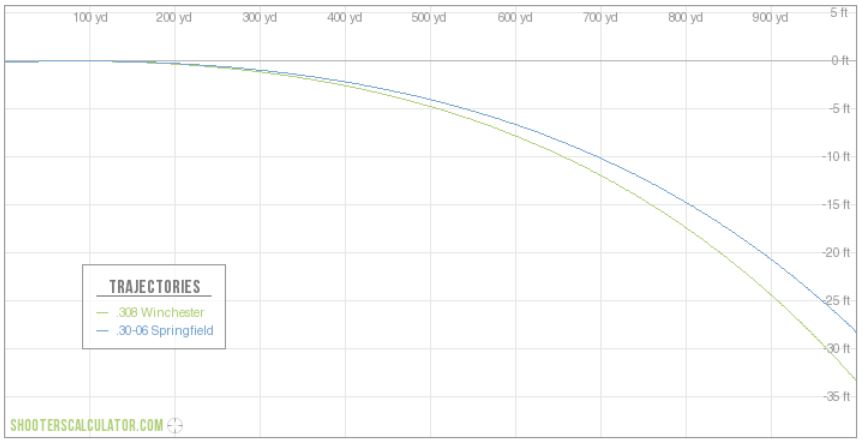
An example. It’s possible to load .30-06 loaded with a 150-grain Hornady SST bullet (.415 ballistic coefficient) to 3,000 fps at the muzzle, while the .308 with the same projectile tops out at 2,800 fps. At these velocities, the .308 loses 9-inches more at 500 yards than the .30-06, and 61-inches more at 1,000 yards. Fairly substantial.
Take Aim At .30-Calibers:
Weighing In On Bullet Selection
The .30-calibers mirror each other for a vast majority of bullet weights, each capable of slinging projectiles from 100- up to 200-grains. Though, the .30-06 offers a bit more flexibility when it comes to loading heavy-for-caliber bullets. The more spacious case allows it to seat up to 220-grain bullets—dynamite medium-range option on heavier game. There are also some match options at this weight appropriate for the .30-06, but in all cases, 200-grains is the ceiling for .308.
.308 Vs .30-06 Accuracy
This facet of the discussion is tricky business. Starting in the 1960s the .308 Winchester began dominating competitive shooting, dethroning the .30-06 in the precision-driven rifle matches. From this era, shooters reported the .308 cutting group size in half, eventually forcing the NRA to shrink the bullseye in high-power rifle matches to avoid ties between .308 shooters. Good proof the squat .30-caliber has more accuracy potential, many attributing everything from more efficient case architecture to greater rigidity in from a short action to its aptitude.
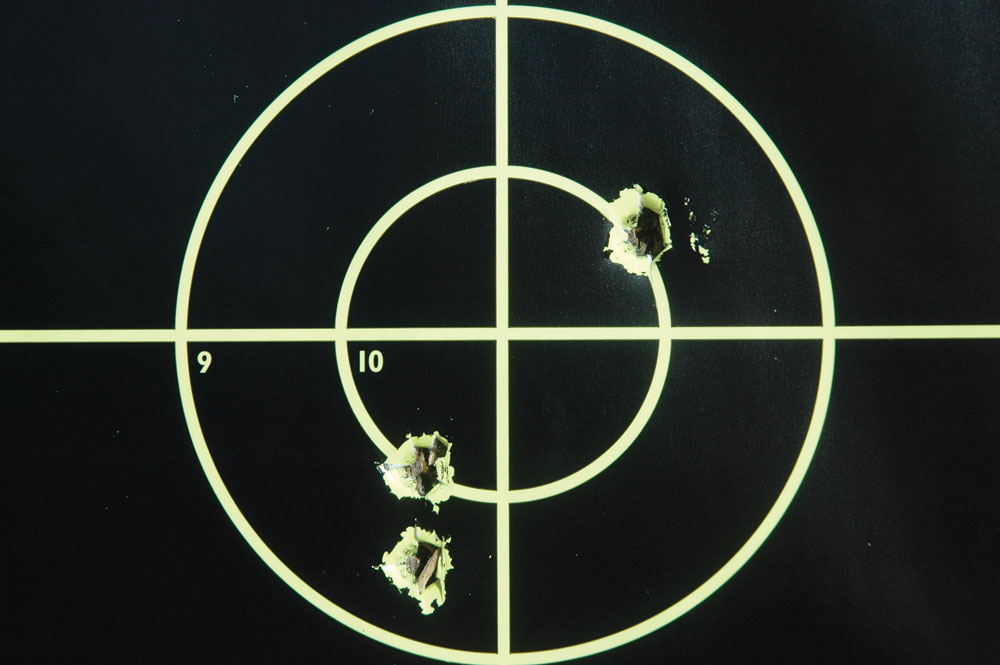
So, there you have it, the Winchester is much more accurate. Well, maybe.
Modern-day match shooters have dusted off the .30-06 and come up with some different results.
A competitive shooter by the name of German Salazar did a two-year analysis of .308 and .30-06 with a matched pair of Gilkes-Action rifles chambered for each cartridge in competition and came up with interesting results. At mid-range, 500 to 600 yards, the .308 had a slight advantage, but at long range the .30-06 proved superior. His conclusion as to the “aught-six’s” superior performance mirrors our talk above on case capacity. More velocity counts down range.
Diehards for either cartridge will unlikely be swayed by these counter-arguments, given the .308 and .30-06 elicit near-religious devotion from some. The rest can find solace both cartridges are highly accurate, enough so they’re capable of hitting 1,000-yards plus with the right rifle and shooter.
Firearms Selection
Among the most popular cartridges of the 20th and 21st centuries, there are no shortage of rifles chambered for the .30-calibers. Nearly every domestic rifle-maker, as well as most foreign, offer both options in every bolt-action they make. The difference comes for shooters in the market for semi-automatic rifles. Boy howdy, the .308 wins out there with some out-and-out classics to choose from.

Given it started life as the 7.62×51 NATO, several intriguing military rifles from across the globe were developed around the cartridge. In turn, the market is rife with semi-automatic renditions of the AR-10, FN FAL, Heckler & Koch G3, M14 (Springfield Armory M1A) and others. Much more limited, there are .30-06 semi-auto options—M1 Garand, Browing BAR (not the military one) and AR-10. It peters out pretty quickly from there.
Digressing to bolt-actions, don’t expect the .308’s short action and .30-06’s long action to make much difference in the overall size of a rifle. Maybe you’ll shave .5-inch opting for the .308 and save 1.5 ounces. Unless a pea under your mattress keeps you awake at night, you aren’t going to notice this difference.
Ammunition Choices
Given it has a significant presence in the competitive and hunting worlds, there is perhaps a greater variety of factory-loaded ammo for the .308. And outside of ammunition droughts (ahem, 2020), it’s among the most readily available. Then again, so is .30-06. Certainly, hunting ammo is not difficult to scratch up and is perhaps a bit more impervious to ammo shortages—those tend to hit cartridges with a tactical bent harder. However, if you search around, there is production-line match ammo.
Sig Sauer came out with an intriguing load around a year ago topped with a 175-grain MatchKing. So, you do have precision options off the shelf.
Parting Shot
After all these years, does the .308 vs .30-06 debate makes sense and should it continue? On one hand, no. The average shooter looking for a top-notch hunting cartridge to handle dang near any game in North America or connect at 1,000 yards out will be served well by either .30-caliber. On the other hand, yes, the discussion does matter. Without ticking down the list of each cartridge’s advantages and disadvantages, shooters might be blind to the fact the .30-06 offers a bit more reloading versatility or the .308 more options in semi-automatic rifles. These points are imperative for some people and worth jawing over. So banter on about the .308 vs .30-06. Besides, what else are you going to do at deer camp, except lie?
We Found Bulk Ammo In Stock:
Disclosure: These links are affiliate links. Caribou Media Group earns a commission from qualifying purchases. Thank you!
 NEXT STEP: Download Your Free Storm Tactical Printable Target Pack
NEXT STEP: Download Your Free Storm Tactical Printable Target Pack
62 Printable MOA Targets with DOT Drills – Rifle Range in YARDS This impressive target pack from our friends at Storm Tactical contains 62 printable targets for rifle and handgun range use. Target grids and bullseye sizes are in MOA. Ideal for long-range shooting! Get Free Targets
Disclosure: These links are affiliate links. Caribou Media Group earns a commission from qualifying purchases. Thank you!
 NEXT STEP: Download Your Free Storm Tactical Printable Target Pack
NEXT STEP: Download Your Free Storm Tactical Printable Target Pack
62 Printable MOA Targets with DOT Drills – Rifle Range in YARDS This impressive target pack from our friends at Storm Tactical contains 62 printable targets for rifle and handgun range use. Target grids and bullseye sizes are in MOA. Ideal for long-range shooting! Get Free Targets
